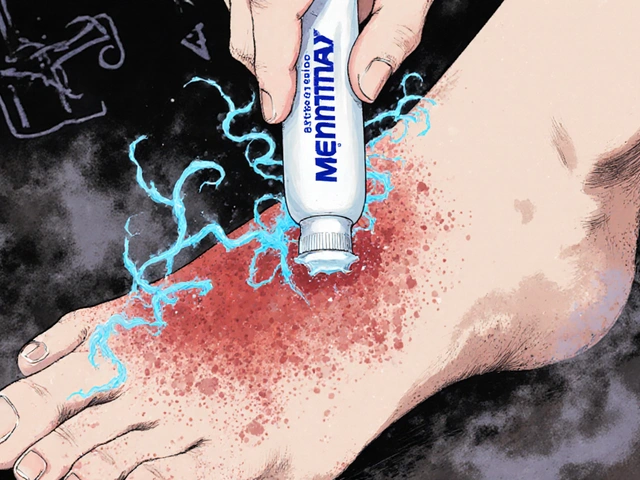For most people, picking up a prescription feels like a simple task: get the pill, take it, feel better. But behind that small white tablet or blue capsule is a quiet battle between science and perception. The truth? Generic medications are just as safe and effective as their brand-name cousins. Yet, many patients still refuse them. And some doctors, despite knowing the facts, still reach for the more expensive option.
What Exactly Is a Generic Drug?
A generic drug isn’t a cheaper copy. It’s the exact same medicine. Same active ingredient. Same strength. Same way it works in your body. The FDA requires generics to prove they deliver the same amount of medicine into your bloodstream at the same rate as the brand-name version. This isn’t guesswork-it’s tested using strict bioequivalence standards. The difference between the generic and brand must fall within 80% to 125% of the original in both total exposure (AUC) and peak concentration (Cmax). That’s not close. That’s clinically identical.Manufacturing facilities for generics are inspected just as often as those for brand-name drugs. The FDA runs about 1,000 inspections a year at U.S. generic plants and another 500 overseas. These aren’t back-alley labs. They’re held to the same Good Manufacturing Practices (GMP) as Pfizer, Merck, or Johnson & Johnson.
And yet, most people still think generics are inferior. Why?
The Cost Difference Is Staggering
A brand-name blood pressure pill might cost $150 a month. The generic? $4 at Walmart. That’s not a typo. Generic drugs typically cost 80% to 85% less than their brand-name equivalents. According to the Congressional Budget Office, if every new prescription were written as a generic, Medicare Part D could save $17.3 billion a year.It’s not just about saving money for patients. It’s about keeping people on their meds. Studies show patients are 6% more likely to stick with their treatment when they’re taking generics. That’s not a small number. For someone with high blood pressure, diabetes, or heart disease, missing doses means more ER visits, more hospitalizations, more complications. One study tracking 136,000 older adults found that when generics for losartan, valsartan, and candesartan hit the market, ER visits and hospital stays went up-not because the generics were worse, but because people stopped taking them. They assumed the cheaper version didn’t work.
Doctors Know Better. So Why Don’t They Prescribe More Generics?
The American College of Physicians made it clear in 2016: prescribe generics when possible. Their guidance was based on hard data showing better adherence and lower costs without sacrificing outcomes. Other major medical groups agree.So why do some doctors still write brand-name prescriptions? It’s not because they’re misinformed. A 2016 study of 151 physicians found no link between a doctor’s belief in generic cost savings and whether they prescribed them. In other words, even doctors who knew generics were cheaper didn’t necessarily choose them.
The real reasons? Patient pressure. A 2015 survey found 41% of doctors said patients sometimes demanded brand-name drugs. Another 40% said patients pushed them to prescribe generics. That’s a lot of pressure from both sides. Some patients have had bad experiences-maybe a different-looking pill made them feel off. Others just don’t trust anything that’s not branded.
Doctors also worry about switching. If a patient’s blood pressure has been stable on a brand-name drug, switching to a generic-even one proven equivalent-feels risky. Especially with drugs that have a narrow therapeutic index, like warfarin or levothyroxine, where tiny changes in blood levels matter. The FDA keeps a list of 15 such drugs where extra caution is advised. But for the vast majority of medications? No risk.

Patients Are Afraid of Change
The FDA’s own research found patients have mixed feelings about generics. They like the price. But they’re unsure about quality. Why? Because generics look different. Same active ingredient, different color, different shape, different markings. That’s not a defect. That’s how the law works-generic makers can’t copy the exact appearance of the brand. But patients don’t know that. They see a new pill and think, “This isn’t the same.”One internist in Texas told a Reddit user he had a patient refuse generic lisinopril because it was “too small.” The brand was larger. The generic was cheaper. Both worked the same. The patient still insisted on the brand, even when told it cost $350 a month versus $4.
And it’s not just patients. Pharmacists report that 30% of people ask, “Is this the real thing?” when handed a generic. That’s not paranoia. It’s a lack of clear communication. The FDA launched its “Look Alike Sound Alike” program to reduce confusion. It’s helped cut patient mix-ups by 37% since 2018. But awareness is still low.
It’s Not Just About the Pill
Doctors aren’t just prescribing medicine. They’re prescribing trust. If a patient has been on a brand-name drug for years, switching feels like losing control. Even if the science says it’s safe, the emotional attachment matters. That’s why the FDA’s Dr. Sarah Ibrahim says: “Patients are more likely to stop taking their generic medications when they experience a change.”That’s why the best approach isn’t just writing “dispense as written” on a prescription. It’s talking to the patient. Explaining that the generic is the same. That the color change doesn’t mean weaker medicine. That thousands of people take it every day without issue.
Some doctors avoid this conversation because it takes time. But the payoff is huge. One study showed that doctors who completed FDA-sponsored training on generics increased their prescribing rates by 23% in just six months. The key wasn’t new data. It was better communication.

Where Generics Still Face Resistance
Not all drugs are equal when it comes to switching. Inhalers for asthma or COPD are a big one. A 2015 FDA study found patients often felt the generic dry powder inhaler didn’t work as well-not because it was less effective, but because the design felt different. The puffing technique, the click sound, the way it felt in the hand. These small differences matter. For someone with chronic lung disease, that feeling of control is part of the treatment.Biologics are another frontier. These are complex drugs made from living cells, not chemicals. Their generics, called biosimilars, are harder to copy. But they’re coming. The FDA expects biosimilars to make up 15% of biologic prescriptions by 2027. That’s a game-changer for conditions like rheumatoid arthritis or cancer, where drugs can cost over $10,000 a month.
What You Can Do
If you’re on a brand-name drug and wondering if you can switch:- Ask your doctor: “Is there a generic version?”
- Ask your pharmacist: “Is this the same medicine?”
- Check the pill’s appearance. If it looks different, that’s normal.
- Don’t assume a change in how you feel is because of the generic. Talk to your doctor first.
- Use tools like GoodRx or SingleCare to compare prices. Generics are almost always cheaper.
If you’re a patient who’s been on the same brand for years and your doctor suggests a switch, don’t panic. Ask for data. Ask for reassurance. Most of the time, the switch will be seamless.
The Bigger Picture
Generics aren’t just a cost-saving trick. They’re a public health tool. When people can afford their meds, they take them. When they take them, they stay healthier. When they stay healthier, the whole system saves money.Right now, 90% of prescriptions filled in the U.S. are generics. But only 72% of new prescriptions are written as generics. That gap? That’s where change needs to happen. Not because the science is new. But because the perception still lags.
The truth is simple: the pill in your hand doesn’t need a logo to work. It just needs to be the right medicine. And for nearly every condition, the generic is just as good.
Are generic medications really as effective as brand-name drugs?
Yes. The FDA requires generics to prove they deliver the same amount of active ingredient into your bloodstream at the same rate as the brand-name version. This is tested through strict bioequivalence studies. For the vast majority of drugs, generics are therapeutically identical. Studies show no difference in effectiveness or safety when used as directed.
Why do some doctors still prescribe brand-name drugs?
Some doctors prescribe brand-name drugs due to patient pressure, habit, or concern over switching-even when the science supports generics. Others may not fully understand how bioequivalence works or worry about rare cases where appearance or inactive ingredients affect patient adherence. But research shows that when doctors are educated on generics, their prescribing rates increase by up to 23%.
Can generic drugs have different side effects?
The active ingredient is identical, so side effects should be the same. But inactive ingredients-like fillers or dyes-can differ. In rare cases, these may cause reactions in sensitive individuals, such as allergies to certain dyes. However, serious reactions are extremely uncommon. If you notice a new side effect after switching, talk to your doctor, but don’t assume it’s because the drug is generic.
Why do generic pills look different from brand-name ones?
By law, generic manufacturers can’t copy the exact shape, color, or markings of brand-name pills to avoid trademark infringement. This is why generics often look different-even though they contain the same medicine. The difference is purely cosmetic. The FDA’s “Look Alike Sound Alike” program helps reduce confusion by improving labeling and packaging.
Are there any drugs I should never switch to generic?
For most drugs, switching is safe. But the FDA lists 15 drugs with a narrow therapeutic index-like warfarin, levothyroxine, and some anti-seizure medications-where small changes in blood levels can cause problems. For these, doctors may recommend staying on the same version, brand or generic, to avoid fluctuations. Always consult your doctor before switching any medication.
How can I save money on my prescriptions?
Ask your doctor if a generic is available. Use price-comparison tools like GoodRx or SingleCare. Many pharmacies offer $4 generic lists for common medications. Consider mail-order pharmacies for 90-day supplies. And never assume a brand-name drug is necessary-90% of prescriptions in the U.S. are filled with generics for good reason.




Patrick Goodall
November 25, 2025 AT 20:42Kaylee Crosby
November 26, 2025 AT 07:51Karen Ryan
November 26, 2025 AT 14:37Lawrence Zawahri
November 28, 2025 AT 14:11Benjamin Gundermann
November 29, 2025 AT 00:22Manish Pandya
November 30, 2025 AT 13:35Adesokan Ayodeji
December 1, 2025 AT 02:57Terry Bell
December 3, 2025 AT 01:18Rachelle Baxter
December 3, 2025 AT 13:09Dirk Bradley
December 3, 2025 AT 15:45